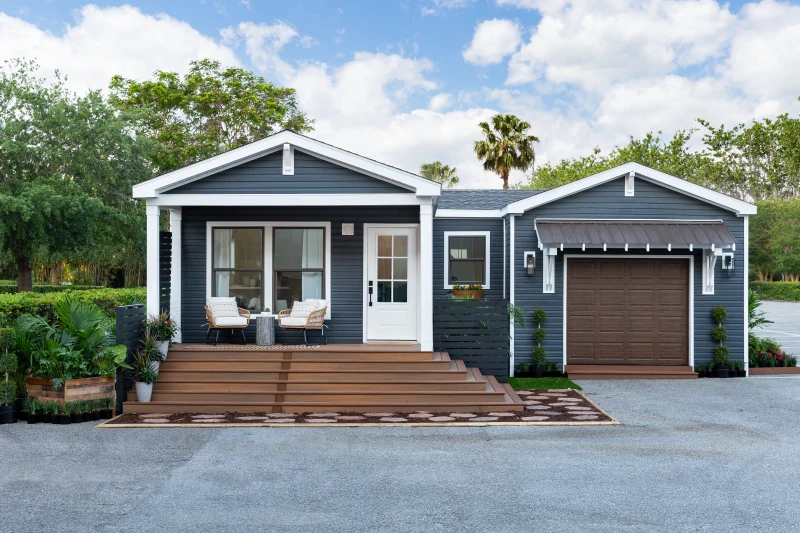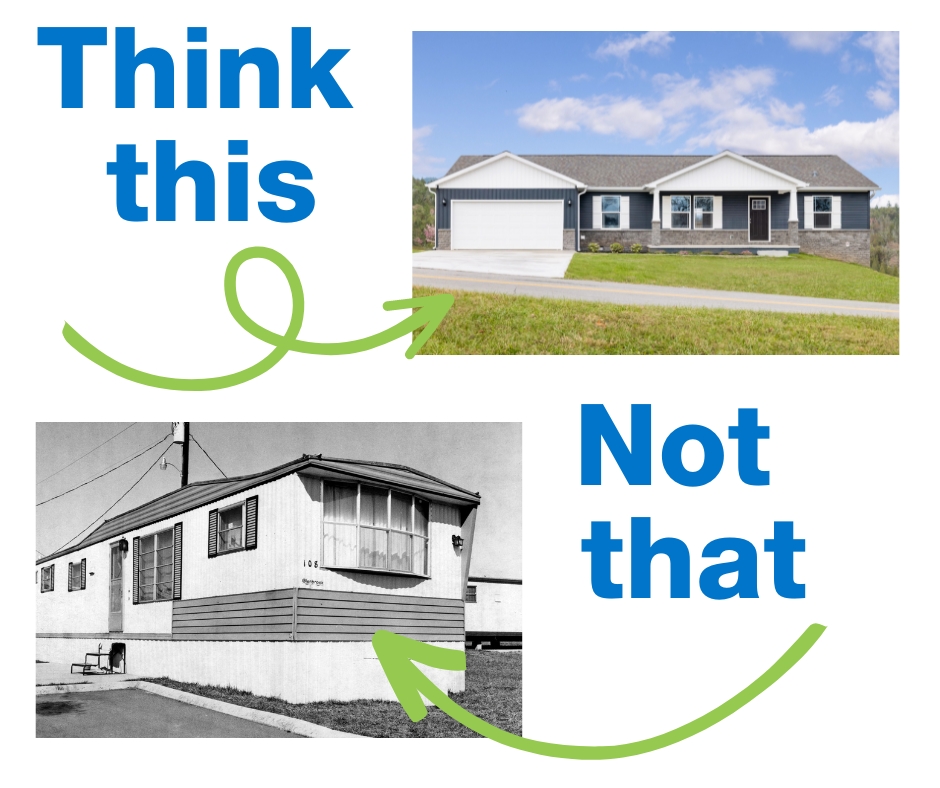Is a Manufactured Home a Trailer?

I know some people still use “trailer” or “mobile home” when they really mean “manufactured home,” but I also totally understand why. After all, this topic involves several different definitions, building codes and even acts of Congress.
That’s why I’m here to help explain the difference with a (brief) history lesson. I’ll also talk about the features and benefits of manufactured homes, because some people may also call a “manufactured home” a “trailer” due to misconceptions about how the homes look or how they’re built.
Trailers vs. Mobile Homes vs. Manufactured Homes
Let’s start off by talking about trailers. For this, I went to my always reliable Merriam-Webster dictionary, which defines a trailer as “a vehicle designed to serve wherever parked as a temporary dwelling or place of business.” The important word here is “temporary,” because while trailers and other RVs like campers or motorhomes do have living spaces and bedrooms, they’re really meant for comfort during traveling or short-term stays. This makes them very different from manufactured homes, which are specifically designed to be long-term, permanent dwellings.
Now we’ll compare trailers to mobile homes with that history lesson. While kit homes that mailed buyers pre-cut materials so they could assemble their own home already existed during the early 1900s, the need for new and affordable housing continued to grow after World War II. This housing demand led to the creation of mobile homes, which usually had an exposed trailer coupler or wheels and were set up on blocks or a stand. This meant the home could potentially be “mobile” and moved to a new location. However, there weren’t really any standard rules or building codes for these early mobile homes, so they didn’t have consistent safety requirements or features.
By the 1970s, the federal government saw the need to address this lack. In 1974, Congress passed the National Mobile Home Construction and Safety Act, which allowed the Department of Housing and Urban Development to establish the Federal Manufactured Home Construction and Safety Standards. This was followed in 1976 by the HUD Manufactured Home Construction and Safety Standards, which you’ll probably also hear people call Hud code. These acts and codes set the current standards for manufactured homes in many ways, including when it comes to:
- General home design and construction
- Durability, home strength and quality
- Energy-efficiency
- Fire safety and resistance
- And home systems like electrical, plumbing and HVAC
And so, the modern manufactured home was born!

Why Should I Get a Manufactured Home?
These new standards have gone a long way toward challenging myths and even stigmas about off-site built housing. That means you’re in for a pleasant surprise if you still picture something like that old photo up there when you hear the words “manufactured home.”
When it comes to today’s manufactured homes, there are four specific benefits I want to highlight: affordability, the building process and materials, the tons of different styles and features, and energy efficiency.
To start with, manufactured homes are usually a more affordable option than your traditional site-built home and come in wide range of prices, starting at under $100,000 before the cost of land, delivery and installation. This is because manufactured homes are built using a more streamlined construction process that includes things like pre-cut materials.
They also tend to have more standard designs, which can make them easier and faster to build. And because manufactured home are built indoors, there’s more control over the production process, with less waste. Plus, there can be fewer weather delays and your new home isn’t getting rained on while it’s under construction.
But those standard designs don’t mean you have to compromise on the exterior or interior, either! Manufactured homes have just as many trendy options as site-built homes, from big kitchen islands and spa bathrooms to flex rooms, garages, porches and more. And their style can be farmhouse, traditional or anywhere in between. Again, it’s all about variety, so you can find a new, quality home that’s going to work for you right when you move in.
Finally, energy efficiency is something more and more home buyers are thinking about. Do you want to potentially lower your energy bills, while also having less impact on the environment? Manufactured homes are a great choice for this! In fact, Clayton homes have a range of available energy-efficient features, like Low-E windows, smart thermostats and even heat pumps.
The simple fact is that modern manufactured homes have a lot to offer home buyers who don’t want to compromise. You really can combine affordable, beautiful styles with quality, durable construction. Want to learn more about how Clayton does it? You can head to the Home Building section of our Studio blog to learn more about the materials we use, our sustainability efforts, home building codes and more.
Are you ready to find your dream home?
Start shopping now or find a home center in your area to learn more about Clayton Built® home options.By entering your email address, you agree to receive marketing emails from Clayton. Unsubscribe anytime.
© 1998-2025 Clayton.

